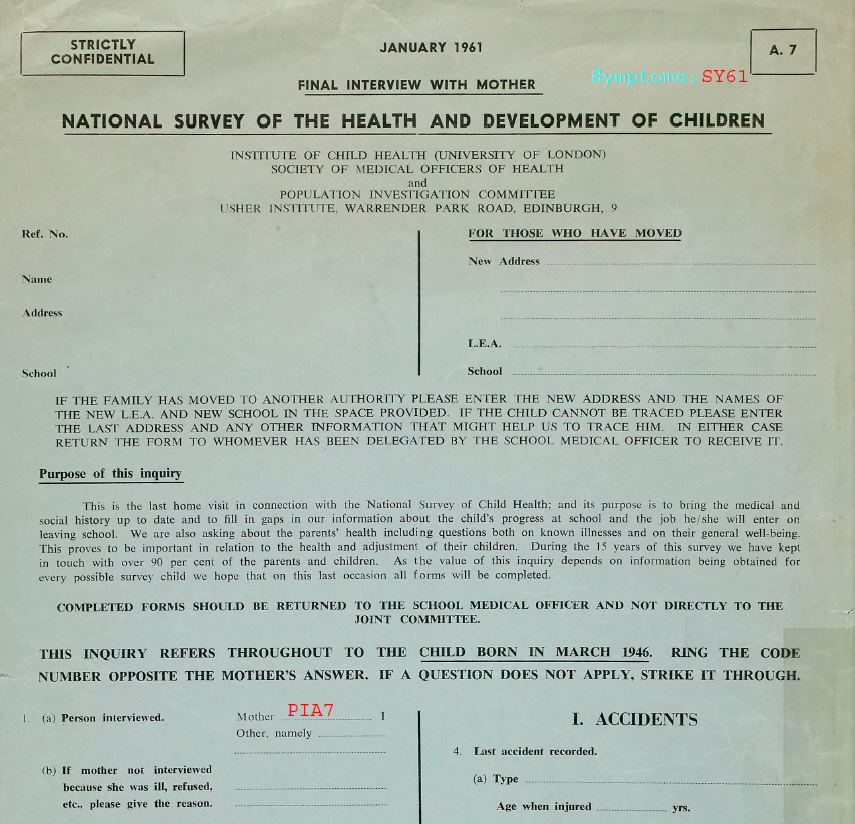...
Text within a questionnaire becomes a statement when it does not fulfil the criteria of becoming any of the other constructs (sequence, instruction or condition) and does not provide any context to be part of the question text. Statements can be found throughout the questionnaire; at the beginning, middle and end and they are used for both questions and sequences. . They can be referenced to both questions or sequences depending on their location and content.
Statements are control constructs that are independent of questions. Control constructs are concerned with positioning in a questionnaire. The statement's position is dependent upon where the text appears in the questionnaire; for example, if it appears before a question then it needs to be input before the question on Archivist, see Example 1.i
Similarly, if the statement appears after the question text then it needs to be input after the question on Archivist, see Example 1.ii
Example 1.i Questionnaire: My Son/Daughter’s Health 2000 (ALSPAC) question A14(a)
...
Archivist view (alspac_00_msdh):
Example 1.ii Questionnaire: Medical Questionnaire (NCDS) question 2(b)
Questionnaire layout:
Archivist view (ncds_74_mq):
Statement labels
Statement ID labels are a way to understand the position of a statement within a questionnaire. In order for statements to have a unique label they need to refer back to either a question or a sequence. If there is a statement connected to an entire section within a questionnaire then it needs to be labelled after the section and it always needs to be numbered; even if there is only one, see Example 2 below. For more on labelling statements please see constructing label (IDs) for more information.
...
Example 4: Questionnaire: Final Interview with Mother 1961 (NSHD) s_intro_vi to s_intro_x
Questionnaire layout:
Archivist view (nshd_61_iwm):
...




